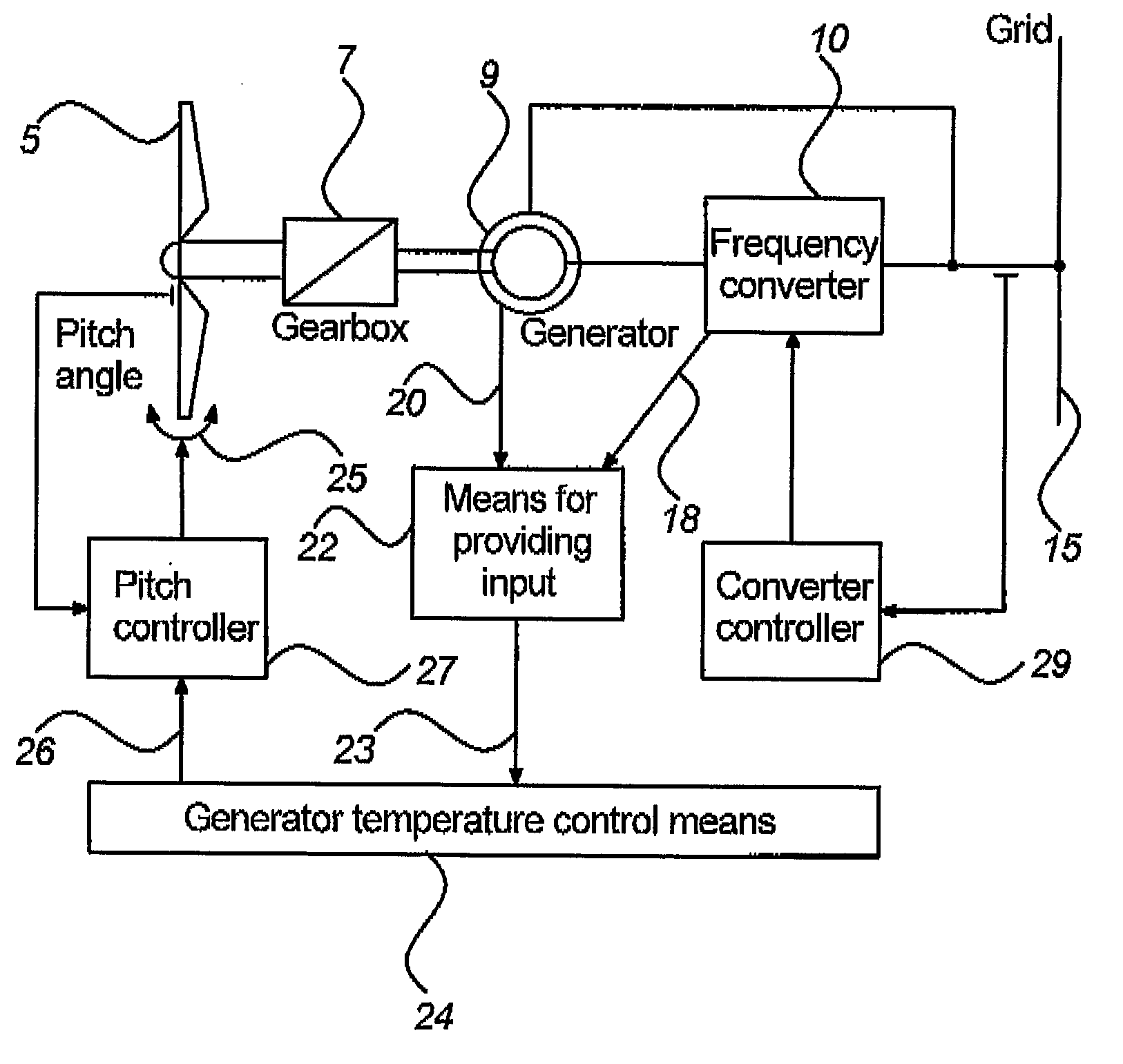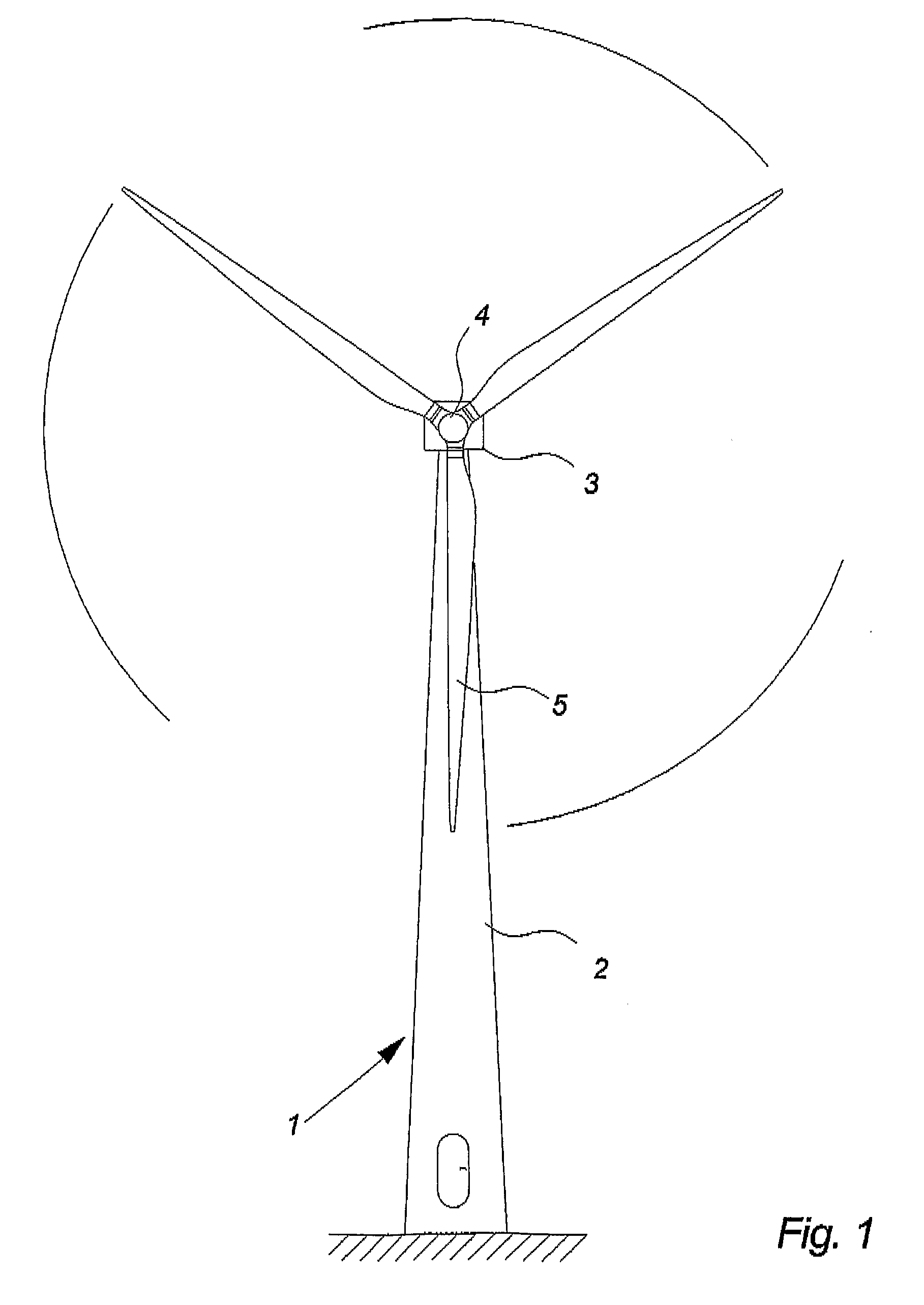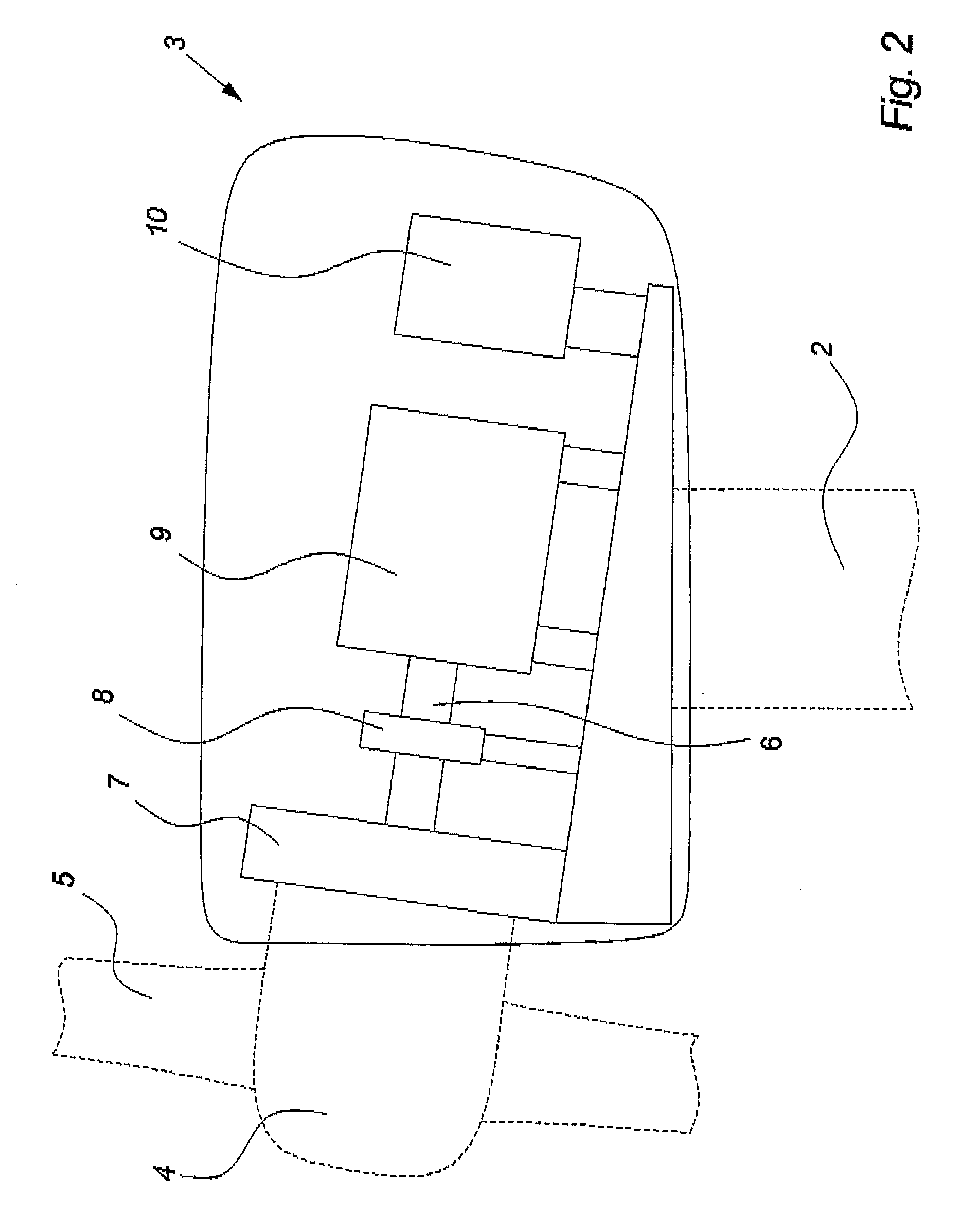Lifetime optimization of a wind turbine generator by controlling the generator temperature
a technology of generator temperature and life-time optimization, which is applied in the direction of engine control, motors, engine fuctions, etc., can solve the problems of reducing the power affecting the efficiency of wind turbine generators, so as to reduce the amount of power.
- Summary
- Abstract
- Description
- Claims
- Application Information
AI Technical Summary
Benefits of technology
Problems solved by technology
Method used
Image
Examples
Embodiment Construction
[0082]In the following is disclosed some embodiments of the present invention.
[0083]FIG. 1 illustrates a modern wind turbine 1, comprising a tower 2 and a wind turbine nacelle 3 positioned on top of the tower 2. The wind turbine rotor 4 comprising three wind turbine blades 5 is connected to the nacelle 3 through a low speed shaft (not shown) which extends from the front of the nacelle 3.
[0084]FIG. 2 illustrates a simplified cross section of a wind turbine nacelle 3, as seen from the side. In the shown embodiment, the drive train 6 in the nacelle 3 comprises a gear 7, a breaking system 8, a generator 9 and a frequency converter 10. It should be noted that not all wind turbine drive trains 6 include all of the components 7-10 shown in the figure. Depending on the type of generator 9 used in the wind turbine 1, the gear 7 and / or the frequency converter 10 may be absent.
[0085]An example of a generator 9 which is connected to a utility grid 15 partly through a frequency converter 10 is a...
PUM
 Login to View More
Login to View More Abstract
Description
Claims
Application Information
 Login to View More
Login to View More - R&D
- Intellectual Property
- Life Sciences
- Materials
- Tech Scout
- Unparalleled Data Quality
- Higher Quality Content
- 60% Fewer Hallucinations
Browse by: Latest US Patents, China's latest patents, Technical Efficacy Thesaurus, Application Domain, Technology Topic, Popular Technical Reports.
© 2025 PatSnap. All rights reserved.Legal|Privacy policy|Modern Slavery Act Transparency Statement|Sitemap|About US| Contact US: help@patsnap.com



